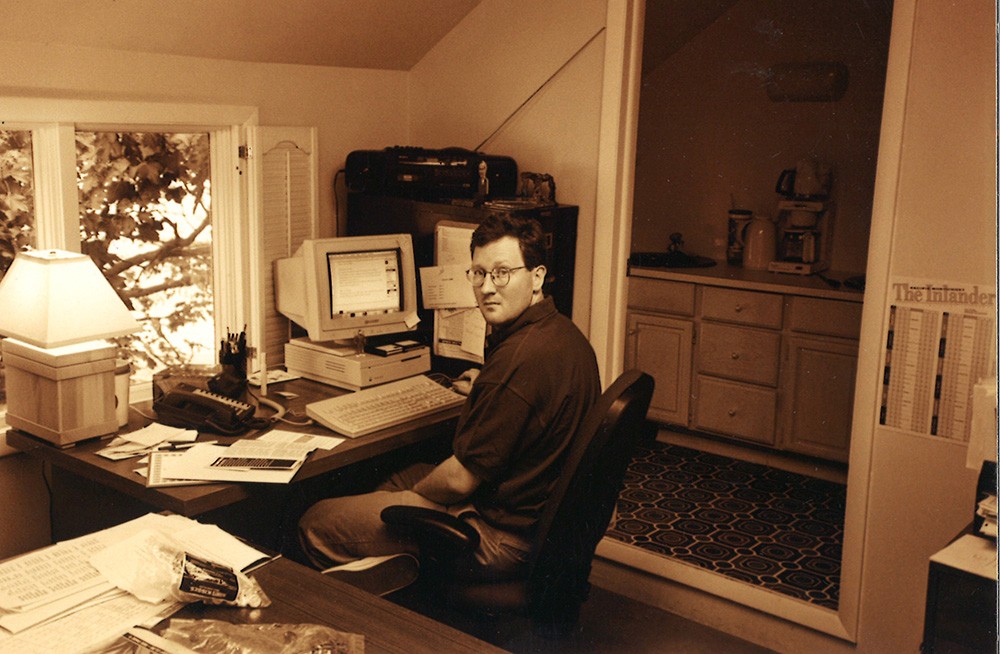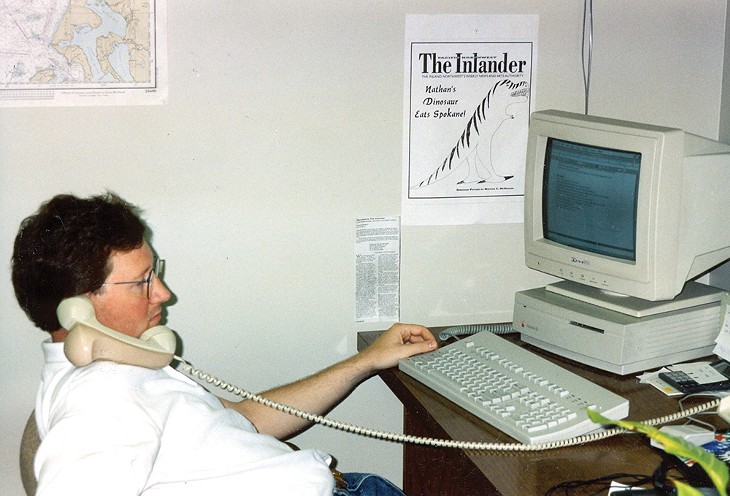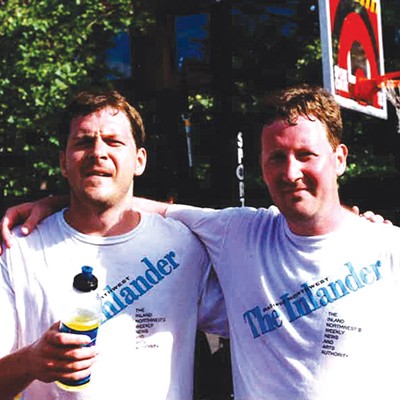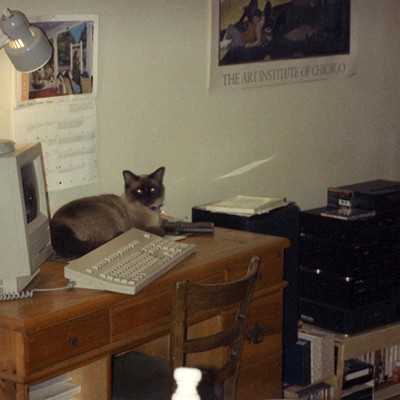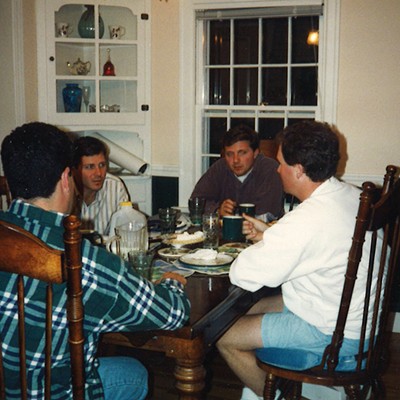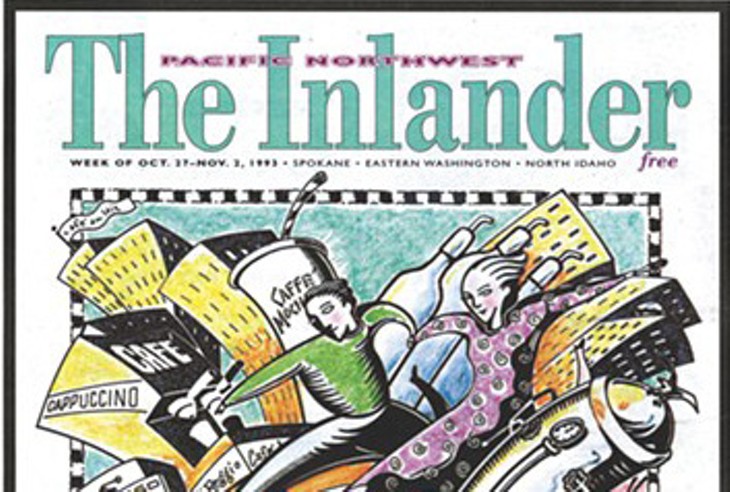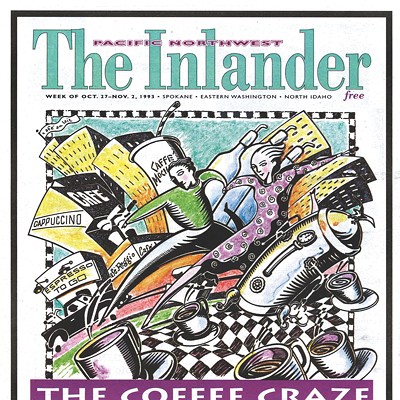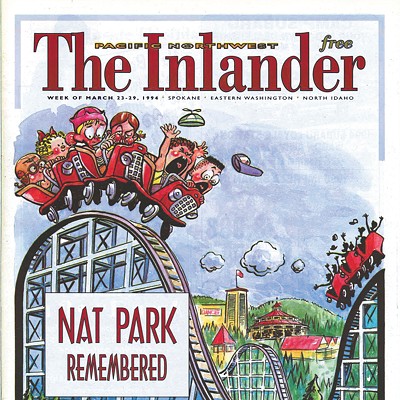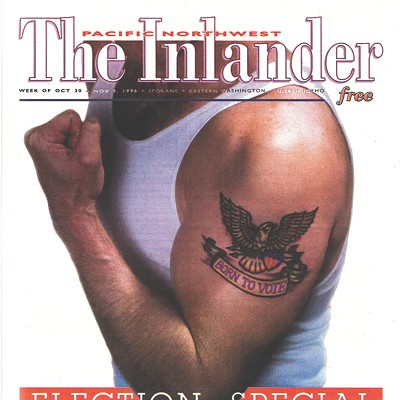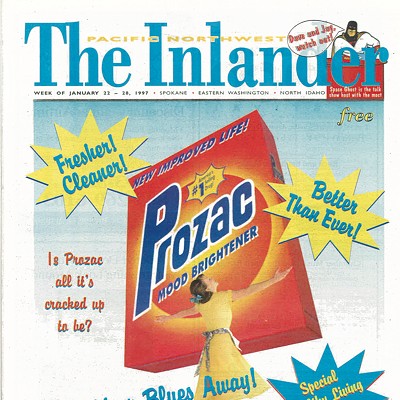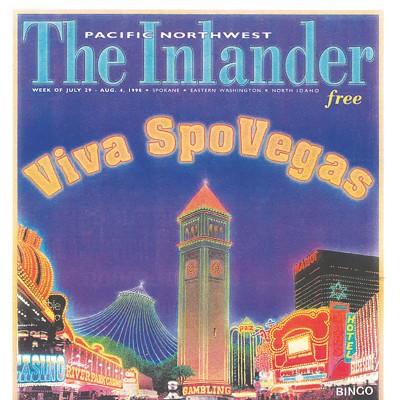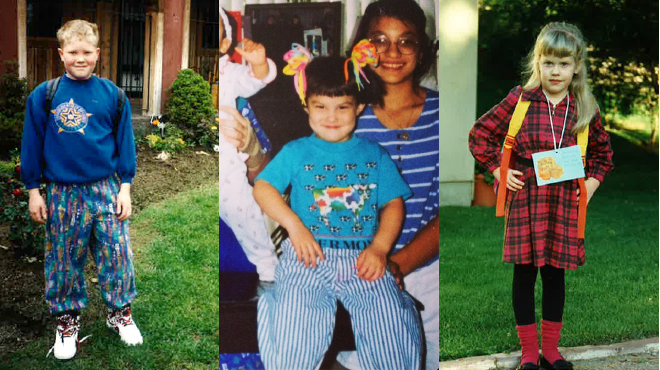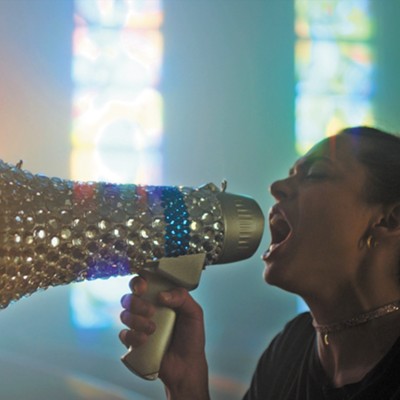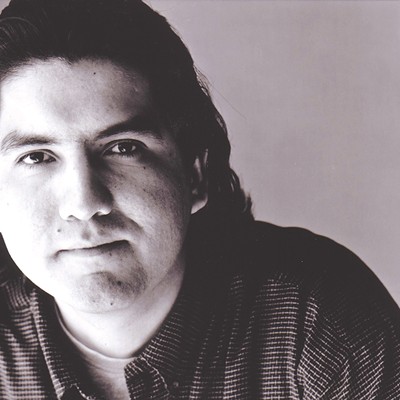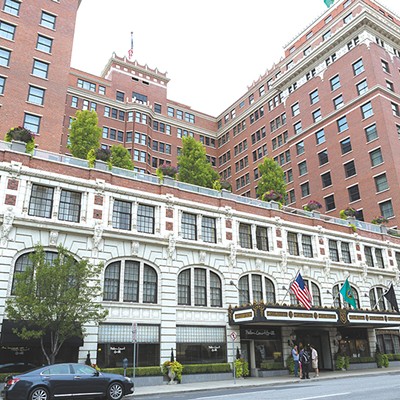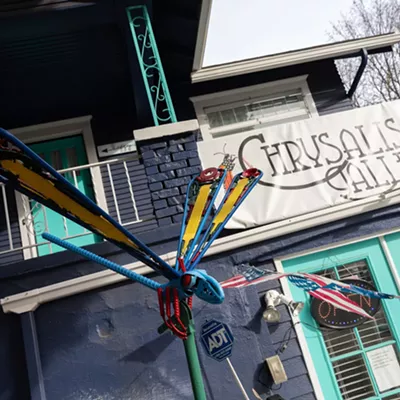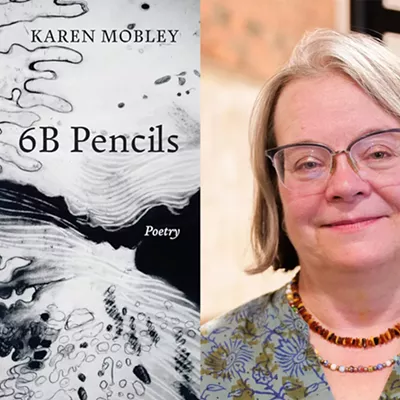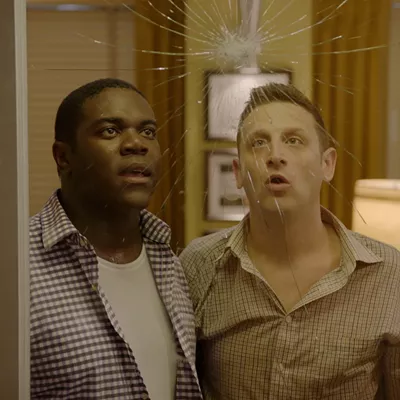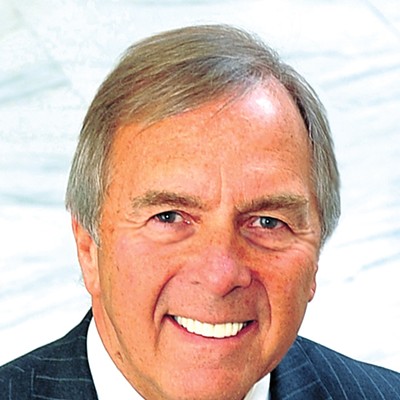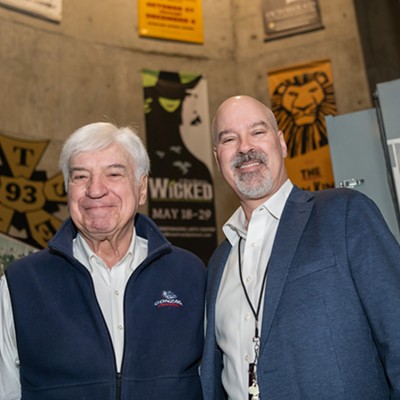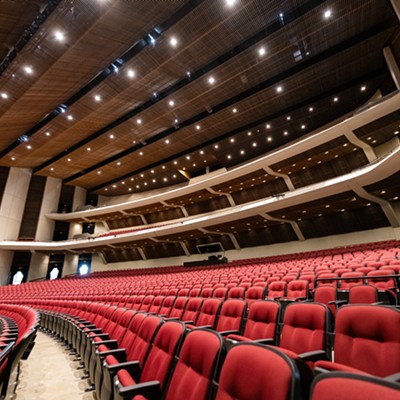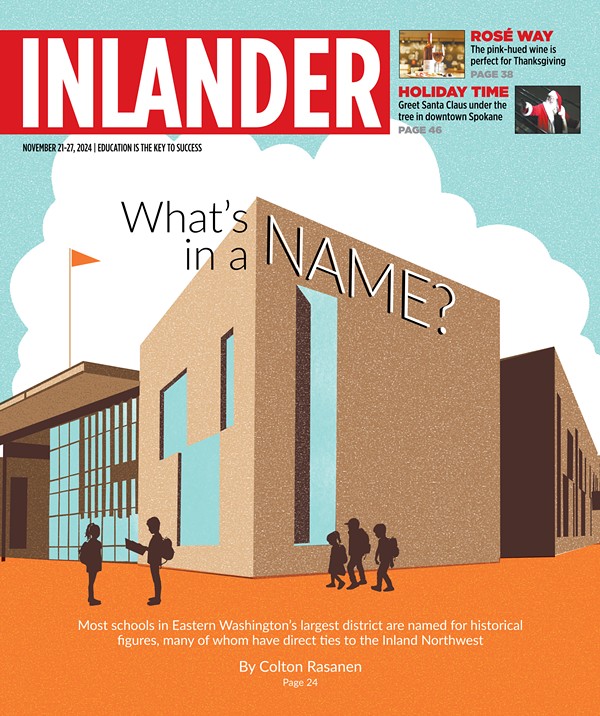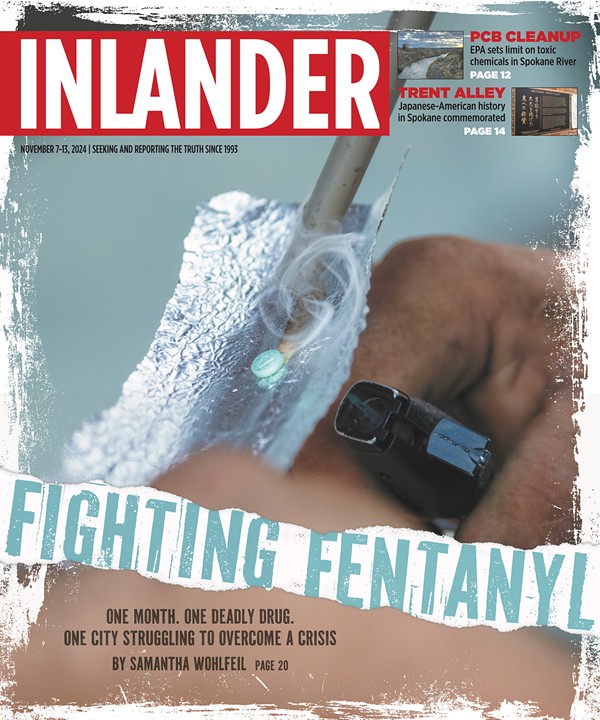That's a question I get all the time. There are a lot of answers. You could say it started when my great-grandfather Dominic got off the train in Spokane back in 1905, a long way from home back in Italy. Or when I started writing stories about the adventures of Secret Agent Toothpaste as a third grader at Roosevelt Elementary up on the South Hill. Or when I mailed my paper-thin résumé to Seattle Weekly — no cover letter — and actually landed an internship. Or when I went to work for Wally Turner at the New York Times Seattle bureau and he advised me to go to his old school, the University of Missouri, to learn about journalism. Or when I met my wife Anne there in Missouri; she always wanted me to start a weekly paper in Spokane. Or you could say it started when I convinced my brother Jer to go into business with me — and we tapped our grandmother Alice and our mom Jeanne to pitch in, too.
The Inlander came from all those places and more, but it was simpler than that, too. Like a lot of things in this world, it was mostly work — hard work with no guarantee of success. I guess it's your garden-variety American Dream.
But actually publishing a newspaper and not just talking about it started in earnest in July of 1993, in our first house up on East 18th. We'd just moved back from Boston, where Anne was in grad school and I worked at a weekly newspaper. I hadn't lived in Spokane for a decade. Hopefully there would be enough going on to fill a newspaper, I remember thinking one sleepless night.
Over our dining room table, we'd plot out that first issue and pore over our five-year financial plan. Soon we rented office space near KXLY and hired our first employee — Jennifer Ranney. Then we made the announcement: A new kind of newspaper would be hitting the streets of Spokane on Oct. 20, 1993.
I was 28, Jer was 23 and just out of college — we barely knew enough to be dangerous. And in our case, ignorance was more than bliss — it was a requirement. If we had known what was coming, there would have been some serious cold feet going around.
My coworker from Boston, Andy Strickman, moved to Spokane, lending us some much-needed journalism chops, and that first issue started to take shape. Tony Duarte pitched a story on a crazy new shop downtown by the name of Boo Radley's. An adjunct professor at Whitworth, Nick Heil, filed a story about the latest show at Interplayers. Ed Symkus, who Andy and I worked with in Boston, reviewed Rudy. Anne dug into her radio journalism roots and wrote a news story using her maiden name as a byline — we didn't want it to look like nothing but McGregors! Mike Corrigan pulled through with a CD review, and Andy wrote the Inlander's very first Last Word, along with a story about Pearl Jam getting even more popular. I used lyrics from the Dire Straits' song "Telegraph Road" to punctuate the cover story I wrote, "Growth... Boon or Bust?" To make things even more complicated, we sent a photographer up with our friend and pilot Tom Shanks to get an aerial shot for that very first cover.
Meanwhile, our ad sales staff was out pounding the pavement, and it was not easy going — our first sales manager quit amid a flood of tears before our first issue ever came out. Still, a few brave clients lent us their support — Global Federal Credit Union, Boo Radley's, Chapter Eleven, KXLY, Camp BMW, Conoco, Hospice of Spokane, Shadle Center and the Bon Marché. Many more cheerfully told us they'd wait and see how things went for us before advertising. Clearly, we had a lot to prove.
Getting that first issue from our frontal lobes onto newsprint was quite painful. The truth is we didn't know what we were doing, but we faked it hoping we'd make it. Our debut issue was supposed to be done Tuesday night, but there we were out at Spokane Print and Mail, on the morning of Wednesday the 20th, watching the papers come off the presses — an event I managed to capture on video. Jer and I, so very young, were all smiles that day — a moment of triumph on the verge of all that was yet to come. Then the video shows friends, family and staffers grabbing bundles of papers as they came off the conveyor, filling up their vehicles alongside the racks they were taking out at the same time.
As all those jam-packed cars and trucks took off into the afternoon light, departing Hillyard for all corners of the region, a newspaper was born.
The next morning, we all straggled back into the office, flipping through our little pride and joy. Soon the reality hit us. Right there in the title, we were calling this outfit a weekly newspaper. That meant we had another one to produce — only this time we wouldn't get a couple of months; more like a couple of days. Time to get back to work!
We had a story queued up for issue No. 2 on "The Coffee Craze," then we wrote about the airport (bo-ring!), local wineries (better) and finished the year with a profile of Duane Hagadone. And we've been doing it ever since.
It's been a crazy 20 years — thanks to something we called the "information superhighway" the first time we wrote about it in 1994, the world has changed. (And it keeps changing, which is why this week we are also launching our brand-spanking-new website — check it out online, on your tablet or on your phone at Inlander.com.)
But the biggest surprise after 20 years is that the Inlander has become the best-read urban weekly in America, according to independent Media Audit research. I guess a free, weekly newspaper that stays focused on all things local is one thing people do want in this topsy-turvy world we live in.
Jer and I are humbled by how we have been embraced over these past 20 years. Now plotting the next 20 years from our new offices in Kendall Yards, I believe our success reflects the vitality of our city and region. Everyone can take credit for our thriving newspaper. We owe great thanks to our staff — past and present — along with our readers and our advertisers.
Spokane, Inland Northwest — you are amazing. It's been a privilege for all of us here at the Inlander to reflect you in our pages these past two decades. ♦
THEN AND NOW
1993: Spokane’s urban landscape had only one way to go, with a shuttered Davenport Hotel, a broken-down Coliseum (aka “The Boone Street Barn”) and a periphery littered with old broken bottles of fortified wine.
2013: Walt Worthy reopened the Davenport and is now working on another hotel, Bon Jovi and Pearl Jam play the Veterans Memorial Arena and the region is littered with breweries, coffee roasters, wineries and distilleries.
1993: The price of Apple stock was $28, Amazon was a river in Brazil and Google was something your toddler would say. Gasoline was $1.10 a gallon.
2013: Powered by iPhones, iPads and iPods, the price of Apple is around $500 per share, and Google recently topped $1,000. Gas has been pushing $4 all year.
1993: Movies released in the fall of 1993 include Schindler’s List and Ernest Rides Again; on TV that year, David Letterman moved to CBS, while comedians Conan O’Brien and Jon Stewart both made their debuts; in music, Liz Phair and Pearl Jam were out with new records.
2013: Notable movies this fall include Gravity and Bad Grandpa; on TV, American Idol copycats rule prime time, while Jon Stewart is more popular than ever; in music, Miley Cyrus and Pearl Jam are out with new records.
1993: Bill Clinton announced he and his wife Hillary would tackle reforming the nation’s health care system. Republicans took over the House because of it.
2013: Barack Obama reformed the nation’s health care system. Republicans shut down the government because of it.
1993: The Inlander debuted with 28 pages and an average press run of 13,000 newspapers per week.
2013: The Inlander published a 128-page Summer Guide — not to mention our 246-page Annual Manual. Today we print 51,000 papers a week and distribute them to our more than 1,000 free racks, reaching more than 200,000 local readers every month.
The Story of the Inlander

